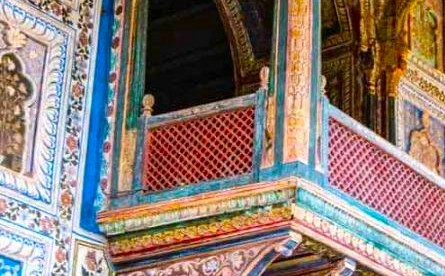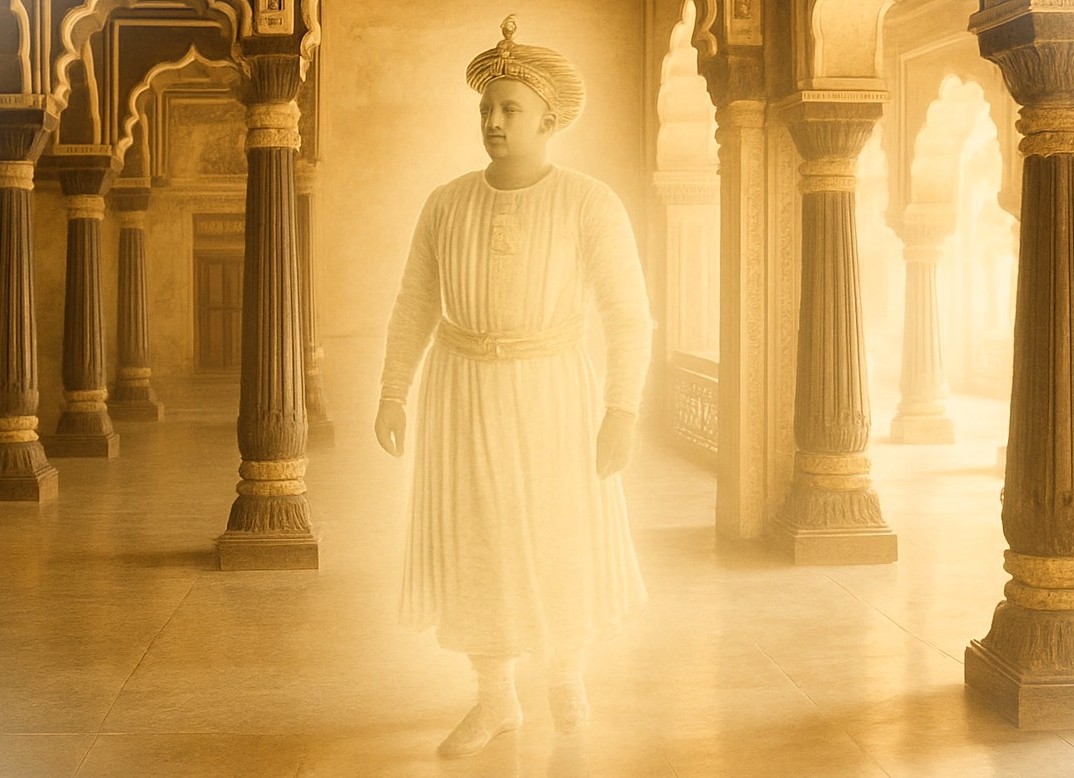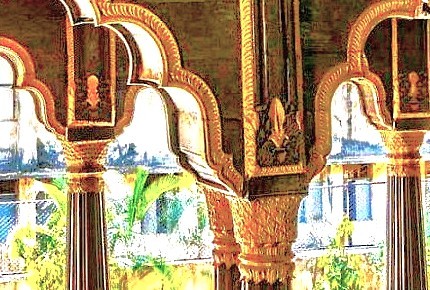Spirit of India
Tipu Sultan Palace Bangalore Karnataka
Mother Masala Tours
The Tiger of Mysore
Tipu Sultan Palace Bangalore Karnataka. The palace stands as a majestic testament to the rich a majestic testament to the rich history of the city and the legacy of one of India's most celebrated rulers, Tipu Sultan. The name referring to the "Tiger of Mysore," represents a formidable character in Indian history known for his innovative military strategies and fervent resistance against colonial rule. Constructed in the late 18th century, the palace served as a summer retreat for Tippu Sultan and an administrative center during his reign from 1782 to 1799. The structure reflects a harmonious blend of Hindu and Islamic styles, revealing the cultural diversity of Karnataka.

Tipu Sultan Palace Bangalore Karnataka: Cultural Symphonies
As we delve deeper into the cultural tapestry of Karnataka, the vibrancy of local festivals comes to life. The annual Karaga festival, occurring in March or April, is one of the city’s most celebrated events. During this time, locals gather to honor the Goddess Draupadi and participate in a colorful procession that winds through the streets, culminating at the palace. Prominent figures in the festivities include the Karaga Dancers, who not only perform traditional dances but also narrate stories that connect back to the region’s mythology and history.
Capturing the Magic: A Photographic Haven

This palace is truly a photographer’s dream, a visual feast at every turn. The elegant arches frame perfect shots, while the brightly painted frescoes and restful, manicured gardens offer countless beautiful scenes to capture. We can focus our lenses on the incredibly detailed woodwork, a testament to artisan skill, and the rich, striking colors that adorn the walls. Throughout the day, light and shadow play together across the pillars and open courtyards, creating dynamic, eye-catching scenes perfect for our photographs.
The Pulse of the Local Community
In Bangalore. The warmth of its residents is welcoming, and their hospitable nature enhances our experience as we explore this vibrant city. Locals are known for their open-heartedness and readiness to share stories about their history and culture, fostering a sense of belonging. As we interact with them while wandering through markets or cafes, we discover their pride in their heritage, which is reflected in their celebrations and daily lives. This genuine hospitality makes exploring the city feel like a shared journey, enriching our understanding of the multifaceted identity that defines Bangalore.
Urban Legends: Local Enigmatic Stories

The Palace is steeped in haunting legends that greatly amplify its historical allure. Everyone loves a good mystery, and one persistent tale claims the palace stands on an ancient temple site, its very foundations resting on sacred grounds that exude a palpable air of mystery. More famously, locals often speak of Tipu Sultan's own restless spirit. They claim he still wanders the halls, a spectral presence that reveals his undying commitment to his lost kingdom. Stories passed down through generations, of his ghost appearing as a fleeting shadow or a full apparition, particularly near the throne room.
Ancient Technologies: Sacred Sound, Geometry & Astrological
Tipu Sultan Palace Bangalore Karnataka. The palace’s design uses sacred geometry, aligning its spaces with celestial bodies to enhance spiritual energy. Granite forms the strong, grounding base, while teak wood adds warmth and excellent acoustics for rituals. These materials were chosen for both their durability and their classic energy. The layout supports the generation of Solfeggio frequencies, especially the 528 Hz tone, known for healing and transformation. This frequency naturally arises from the palace’s harmonious formation and geometric patterns, demonstrating deep knowledge of ancient spiritual concepts and further connecting the structure to both cosmic influences and the divine.
Ancient Mosaics: Impeccable Craftsmanship

Walking through the rooms of the Palace, we admire the craftsmanship apparent in every single detail. This historic structure is a masterpiece of artistry. Constructed using a stunning combination of intricately carved teakwood for its pillars and arches, alongside sturdy, supportive stone, the palace proudly displays a unique blend of architectural design styles. This Indo-Islamic fusion vividly highlights the rich artistic influences of its time. You can see the dedication in every ornate balcony and polished surface. Designed under the direct supervision of Tipu himself.
Resilience and Renewal: Overcoming Adversity’s Challenges
The palace has witnessed pivotal moments in history, including the struggles faced during the British East India Company's conquest of Mysore in 1799. Despite suffering damage and neglect during those tumultuous times, the structure has undergone significant restoration efforts in the years that followed. These restorations haven’t just revived the building’s magnificence, it has also rekindled the spirit of the Tippu Sultan’s legacy among the people of Bangalore. This commitment to preserving their history is a testament to the resilience of the community, as they continue to honor their heritage amidst the rapid changes of modern life.
Urban Legends: Strange Sightings, Myths, and Mysteries
A place of enduring myths, most famously the tale of its ‘Hidden Treasure.’ Legend holds that Tipu Sultan concealed immense riches somewhere within the palace walls, sparking common tales of treasure hunters seeking these elusive fortunes for generations. The palace's mysterious aura is enhanced by modern visitors who report strange occurrences, such as fleeting shadows and unexplained sounds that echo through its ancient halls.
India - When Logic Takes A Holiday
Join us on this incredible journey through history and culture. The palace itself is simplistic, grand and beautiful. There is a strong silence here that is profound, an energy of calm radiates. The architecture reveals elegant Indo-Islamic influences with intricately carved wooden details, towering columns, and mesmerizing geometric patterns adorning the walls and ceilings. The summer residence's ingenious natural cooling system demonstrates.
Symphony of Generosity: Offerings from Wanderers to Residents

Tipu Sultan Palace Bangalore Karnataka. Cultural exchanges offer profound and lasting benefits for everyone involved, creating a powerful cycle of mutual enrichment. As travelers, when we interact with local communities, we gain invaluable firsthand insight into their unique traditions, diverse beliefs, and daily practices, moving beyond textbook descriptions to genuine understanding. In return, we share our own perspectives, fostering a two-way dialogue. For the locals, this engagement often brings increased economic support and validates their cultural heritage.